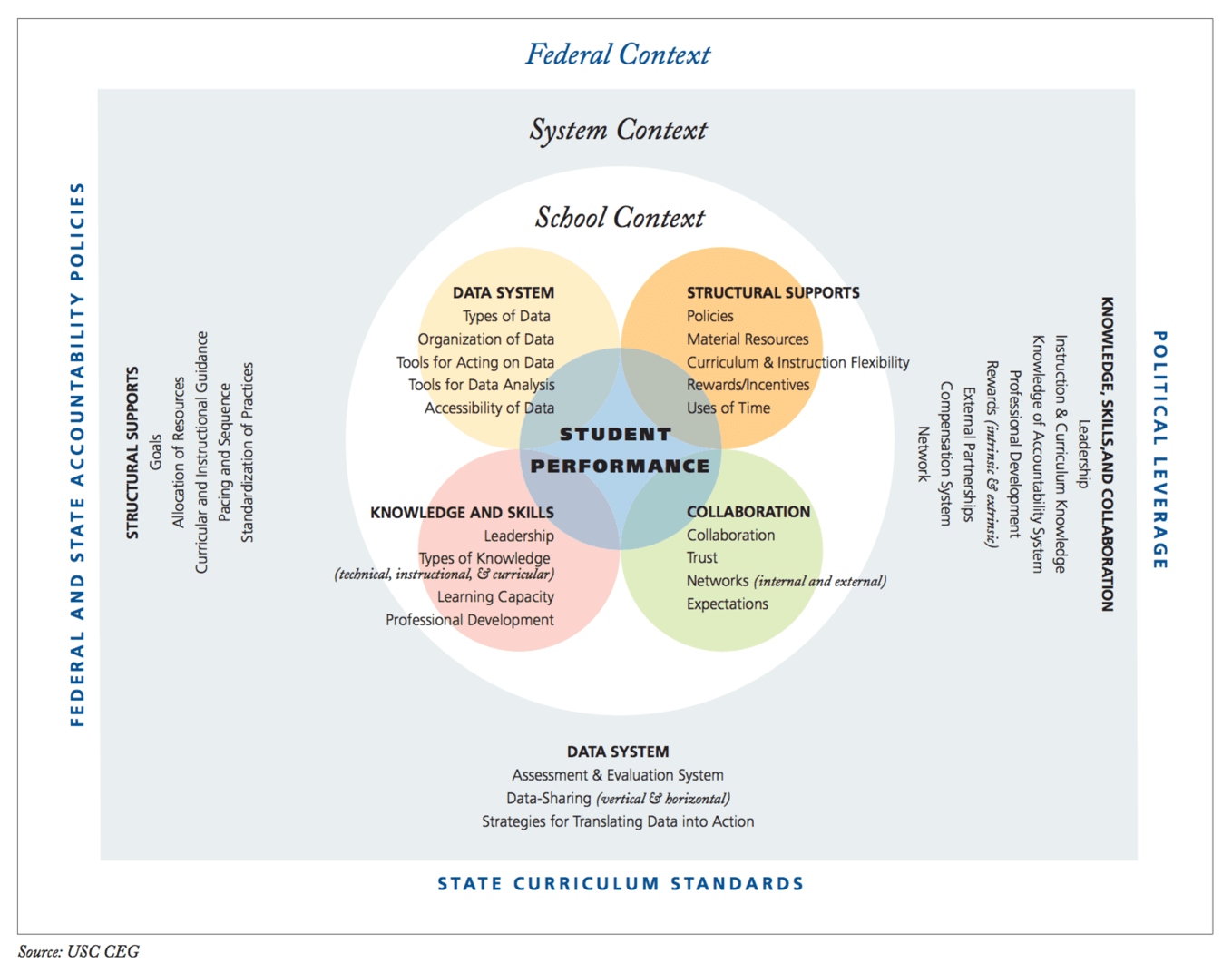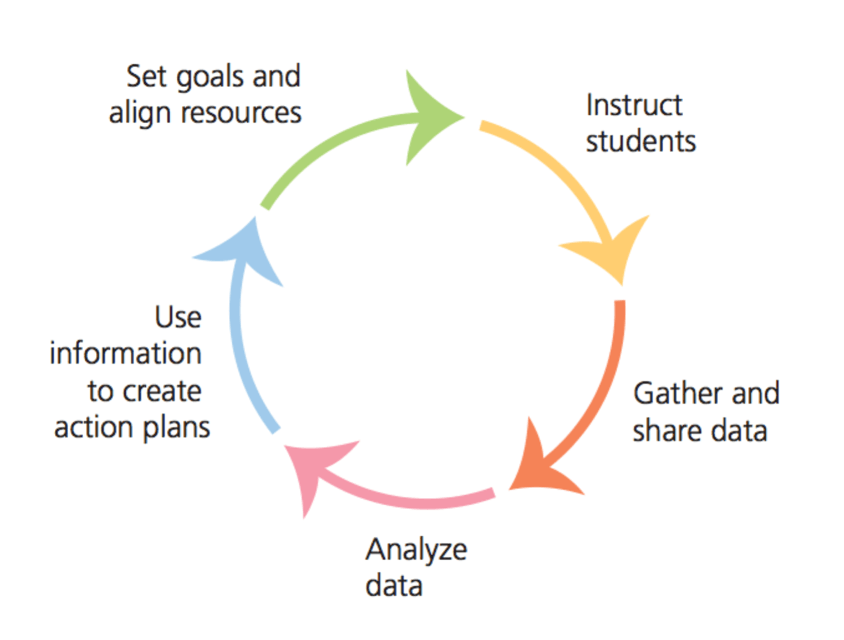In educational research regarding modern school reform, the improvement of school leadership ranked high on the list of priorities. A 2010 survey of school administrators, policymakers and school owners revealed that the quality of school leaders is one of the most pressing matters among issues in education. While the quality of instructors stood above all others, school leadership outstripped issues such as high drop out rates, STEM integration, and college and workforce preparation.
Now, it is time to find school leadership that works. The Wallace Foundation took on this task, carrying out over 70 studies to find the five fundamentals of effective school leaders. Effective school leaders lead to great schools - that’s why it is important to consider and implement the below practices, as strongly suggested by the best of research.

1. Committing to a high standard of success for all students
A number of researchers specializing in education leadership state that it is the responsibility of effective school leaders to establish a culture of high standards in a school. The researchers at the University of Washington support this notion, defining it as a schoolwide learning improvement agenda that focuses on goals for student success.
Academic achievement may seem like an obvious goal for school leaders, but it has not always been so. In fact, historically, school leaders, particularly principals, were mostly seen as managers of the school. High standards were set and followed only for students aiming for college. A Vanderbilt study on this topic examines the change of the principal’s role, which occurred in only the last two decades:
"The research literature has consistently supported the notion that having high expectations for all, including clear and public standards, is one key to closing the achievement gap between advantaged and less advantaged students and for raising the overall achievement of all students."
2. Creating a healthy school environment
The best principals ensure that the school environment fosters learning from its very core. As defined by Vanderbilt researchers, such “a healthy school environment,” encompasses the basics, such as safety and order, but also includes qualities such as a “supportive, responsive” attitude toward the students. It also incorporates teachers feeling that they are part of a community of professionals focused on high standards of instruction.
What makes a climate hospitable to effective education? Researchers determined the following characteristics of a healthy school environment:
-
The students ask more questions than the teachers
-
Questions are valued over answers
-
Ideas come from various sources offering each perspective of an argument
-
Different learning models and grading criteria are utilized
-
The community is connected and thrives on classroom learning
-
The standards for success are transparent and collaborated by students, teachers and school leaders
-
Learning habits are taught and upheld
-
Opportunities for learning and growth are constant and creative
According to the International Journal of Leadership in Education, principals seeking to improve student academic performance should focus on improving the school’s environment. First and foremost, this may be done by fostering strong relationships between themselves, their teachers, students, and parents. Measuring school climate and using the results of these assessments to focus the school’s goals on learning is important for the process of improving the school’s overall performance.
3. Cultivating leadership in others
According to the research from the universities of Minnesota and Toronto, principals who are rated high by their teachers for creating a positive climate for instruction also receive higher marks than other principals for cultivating leadership in the faculty. In fact, this practice leads to vast improvements in student academic performance. The same study showed that effective school leadership is associated with better test scores in nation-wide exams.
Effective principals know that collaboration is the hallmark of leadership, and they encourage staff to take on stronger roles in the school. They utilize teacher training and evaluation to teach and inspire teachers to become leaders themselves. To foster more teacher leaders, these principals are aware of certain attributes behind effective teacher leaders. Some of these attributes include the qualities of great instructors, as well as skills that are not taught in teacher preparation programs, such as curriculum planning or data analysis. To cultivate leadership in teachers, these principals encourage professional development and support training and outreach programs for teachers.

How to Improve Teacher Leadership in Your School
While the principal should consider external training for teacher leaders, funding may come as a barrier to this sort of program. However, there are certain steps that principals may take to foster quality teacher leadership in their schools:
- A strong instructional record, activities outside of the classroom, and the right disposition to lead others are the determining factors when selecting candidates for leadership roles. Has this individual attained academic goals in the classroom? Does he or she set and model high standards and expectations, have the emotional intelligence to earn trust among others and have the ability to navigate difficult situations?
- Diverse backgrounds and expertise areas are crucial when building a school leadership team. Tasks and responsibilities should be assigned in accordance with individual capabilities, as well as the priorities of school leadership.
- It’s important to be transparent with expectations with the teachers. The principal must set specific impact goals, providing regular feedback and performance analysis.
- Install leadership skills in all teachers. It’s about providing opportunities for learning, growth and the development of leadership skills incrementally. Incorporate regular feedback of the teachers’ daily responsibilities.
4. Improving teacher instruction
Observing teachers, supervising curriculum changes, and providing feedback are the fundamentals of a principal’s instructional leadership. As a principal, it’s important to implement a number of strategies for improving instruction in your school. You can improve instruction by implementing the following strategies:
Get into the Classroom
Some of the key aspects of instructional leadership are to be visible, accessible, and to get into the classroom. This may seem like an easy first step. However, the principal’s physical presence in the classroom may not seem as much of a priority compared to other tasks. Consider increasing the number of formal observations that are conducted throughout the year, as well as implement an informal schedule of walk-ins with your leadership team. In fact, The Instructional Leadership Challenge, in which over 10,000 school leaders all over the world participate, suggests that the principal should visit the classrooms at least 500 times a year.
In fact, a study on school climates revealed that the schools with truly positive climates had strong leaders that made instructional leadership a top priority. Principals set a positive tone in that direction by showing interest in instruction. An important aspect of visiting the classroom is making the experience positive for both the principal and the teacher. Ensure that the teachers know that you are not there for the purposes of critique - instead, you are there to learn with them about instruction.
Optimize Feedback
After formal observations or teacher evaluations, no matter how positive, ensure that you incorporate at least one area in need of improvement. The Educational Leadership Magazine determines seven elements of effective feedback, which has been proven to be the most powerful influences on instructional improvement. Effective feedback is the following:
-
Goal-oriented: It’s crucial to be specific about the goal of a certain instructional practice, and provide the criteria by which teachers may self-assess
-
Transparent and Tangible: Teachers should clearly understand feedback they are provided, and be able to reference back to it for improvement
-
Actionable: Every piece of feedback should have an action attached to it. What action can a teacher take, short or long-term, to address and fix an issue?
-
User-friendly: Being specific and personalizing feedback is the key to improvement.
-
Timely: Timing is everything. Teachers should receive timely feedback and opportunities to use it while the experience and its effects are still fresh.
-
Ongoing: Ensuring that the feedback is ongoing goes hand-in-hand with the feedback being timely. Ongoing feedback gives teachers a number of opportunities to self-assess and use the feedback they receive.
-
Consistent: Teachers must be on the same page of what high quality work means in the school. That’s why consistency, backed by evaluation rubrics and analyses, paves the way to high quality over time.
Grow Professionally
The latest issue of Principal magazine provides school leaders with the resources for professional growth, which is key to instructional leadership and all aspects of school improvement. The article provides four strategies for professional development in principals.
Develop your voice. In Make an Impact, school leadership specialists urge principals to continue developing listening and learning skills. These skills may seem simple, but, as the authors argue, they are essential to leveraging and strengthening your leadership voice.
Engage in mentoring. The benefits for mentorship do not end once you gain experience in your career. Mentoring someone else encourages reflection, stimulates creative problem solving, and helps your professional growth.
Leverage a coach. Whether you are a beginner or a seasoned expert in your field, a coach can be a great resource for improving instruction in your school. A coach has a toolbox of strategies for school improvement and will be able to provide you with a defined theory for action.
Utilize peer support. Your network of professional support may include social media, your colleagues or professional associations, and a professional learning network. The easy ways to connect make your learning journey easy and accessible, and you will never stop growing!
5. Managing people, data and processes
One of the best ways for principals to optimize learning time is to observe how effectively teachers utilize the first five minutes of class time, Dr. Alvy, the author of The New Principal's Fieldbook: Strategies for Success, said. "Look at how the first five minutes of class goes. If you lose five minutes a day, that's 15 hours of instructional time a year." He recommends that principals analyze examples of the students’ work as they make their rounds in the school.
"One of the most valuable management tools is data," Dr. Alvy concluded. "Make sure you make decisions based on research. Consider what do on a daily basis to improve student achievement. Remember to put data in context."
Check out our list of best school administration software here!
Data management is one of the most important responsibilities of a principal. To lead the charge in improving academic performance, principals must be proficient in using data as a leadership tool. A 2017 report on academic performance-driven schools determined six key strategies to produce significant results in student achievement, centered on employment of data utilization. The strategies provided by the report are summarized below.
- Having a Foundation for Data-Driven Decision Making: Ensure that the goals set by your school are specific and measurable through data.
- Establishing a Culture of Data Use: Be transparent and clear about your expectations for data collection and management. A system of accountability and shared goals will optimize your school’s performance.
- Investing in Data Management Systems: Building a solid platform for managing data on all levels of the organization requires an investment. Secure a platform that can manage and illustrate your data.
- Selecting the Right Data: A diverse mix of data is important for assessing your entire school’s performance. This means reaching beyond student assessments, but also teacher evaluations, scholarships, etc for data-driven decision making.
- Building School Capacity: System-wide capacity encompasses the following: investing in assessment and data education of staff; providing support to staff and contextualizing data; scheduling teacher collaboration time based on gathered data; and connecting with other schools, sharing data and improvement methods.
- Analyzing and Acting on the Data: Providing timely data analysis protocols and goal-monitoring reports leads to great improvements in the overall performance of the school.
A study by USC highlights the various enablers of data-driven decision making. In the conclusion of the study, researchers found that when combined with the micro-cycle of instructional improvement cycle, performance-driven schools can see a significant increase in student performance. 

The literature on the topic is clear: effective school leadership has significant impact on students’ academic performance. A key dimension of school leadership involves utilizing student data to drive effective decision making at all levels of the school.
Let us be your helping hand in your journey as a school leader. At Your Agora, we built an online platform that makes the lives of ESL teachers and school leaders easier. With a collaborated library of teaching material, user-friendly tools, and automatic scheduling, Your Agora is there to make your language school more efficient and proactive in student achievement. With thorough research and a team of teachers from all over the world, we created a software that will advance you toward your goals!